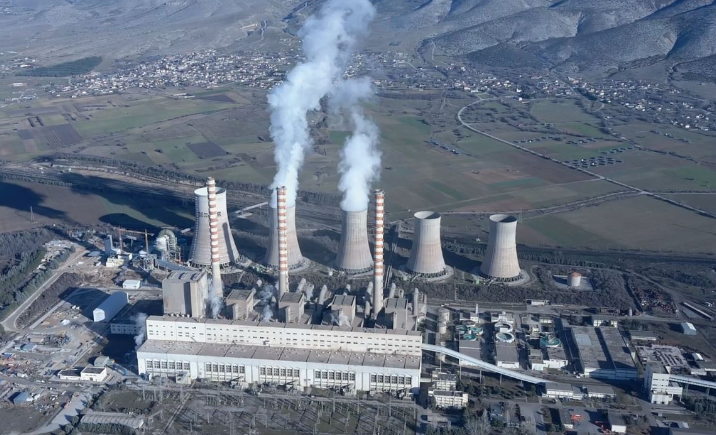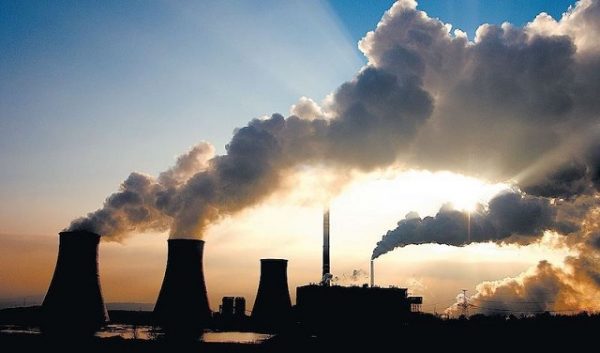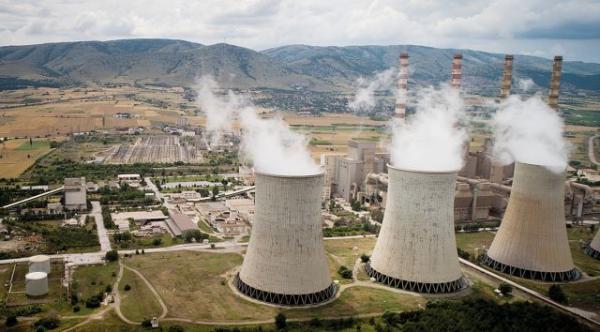
A “window” for a faster de-lignification of the country’s energy mix before 2028 opens the revised National Energy and Climate Plan (ESEP), which was sent last Friday for approval to the Commission. In particular, the lignite plant retirement schedule does not take into account the plan to double lignite power generation announced by the government in 2022 for energy security reasons.
Thus, it foresees an early shutdown for the four lignite units of Agios Dimitrios (I, II, III and IV) at the end of 2023, i.e. in two months. It is noteworthy that by ministerial decisions of 2021 and 2022, all four units exceptionally extended their operating hours until the end of 2025. In fact, the two units, III and IV of Agios Dimitrios. also supply the district heating of Kozani.
At the same time, the new ESEK foresees that after December 31, 2028, the electricity generation with lignite fuel will also stop at the new PPC “Ptolemaida V” unit. However, it is pointed out that “this timetable is not final and based on the comments of the agencies, the acceleration of the complete de-lignification of the energy system is assessed well before 2028”.
Reduction in gas consumption
At the same time, a significant increase in the capacity of gas-fired power plants is projected to 7.7 GW (gigawatts) in 2030, compared to the 6.9 GW predicted in the previous ESEK of 2019. However, it is interesting that, although in the revised ESEK the unit capacity is larger (to accommodate the third natural gas unit under construction), gas-fired power generation is limited to 11.7 TWh (terawatt hours), down from 19 TWh predicted in 2019 with unit capacity at 6.9 GW .
Thus, it is no coincidence that the researchers report that “the economic viability of natural gas units, especially the older ones, may be at risk”, which they attribute to the rapid penetration of Renewable Energy Sources (RES), but also of other technologies ( storage systems and demand response). That is why, as they typically state, “to ensure the operation of the necessary production resources that ensure the sufficiency of the system’s power, the adoption of appropriate reinforcement mechanisms may be required”.
In any case, the addition of new gas units to the electricity system, according to ESEK is necessary in order to ensure the power sufficiency of the electricity system “so as to satisfy a minimum degree of reliability to cover the electricity demand in the system, taking into account the radical transformation of the power generation system in the next period”.

Expansion of subsidies for RES and storage
The country’s road map for the energy transition until 2030 includes a higher penetration of RES and energy storage, but also an expansion of investment support mechanisms. In particular, in the revised ESEK, until the end of the current decade, RES penetration is foreseen by:
44% in final energy consumption (from 35% in the current ESEK of 2019)
79% in electricity generation (from 61%) and around 95% from 2035 onwards.
46% in the heating and cooling sectors (from 43%)
29% in transport (from 19%)
The installed capacity of onshore wind and solar farms is projected to increase by 12 GW by 2030 (from 11.5 GW at the end of 2023 to 23.5 GW in 2030). This implies an increase in the target by 8 GW compared to the target set in the existing ESEP of 15.5 GW. Of the 23.5 GW of RES, 9.5 GW will be wind farms (of which 1.9 GW offshore wind), 13.4 GW solar and 0.6 GW other RES.
In order to achieve the penetration targets of RES, as stated in the ESEK under review, the scheme of operational support for RES stations until the end of 2025 which has been approved by the Commission and provides for support through tenders for the installation must be observed:
– at least 3,250 MW of onshore wind and solar farms
– 200 MW of onshore wind and solar farms with storage (accumulators)
– 500 MW of onshore wind and photovoltaic parks in the areas with saturated grids of Crete, the Cyclades and Evia.
However, it is pointed out that an extension of the existing approved support scheme is required by increasing the projected power for RES stations at least until 2030.
The same is required to achieve the goal of installing 5.3 GW of energy storage units, of which 3.1 GW are batteries and 2.2 GW pumped storage. As the scholars report, it is not enough just to complete the application of the approved support scheme for the installation of storage systems with accumulators with a total capacity of 1,000 MW, through the three tenders to be completed by the end of March 2024, but its extension is also needed.
Regarding diesel power generation on the islands, it is proposed to remain at 0.7 GW units until 2030, while hydroelectric projects (HPP) are to increase from the 3.1 GW currently installed to 3.8 GW in 2030. For the achievement of the goal, the operation of the Mesochora HPP, with an installed capacity of 160 MW and the Metsovitikos HPP, with an installed capacity of 29 MW, as well as other large NPPs, which are either maturing for licensing, such as the Avlaki HPP on the Acheloos River (with an installed capacity of 83.6 – 100 MW) ), or have been delayed due to the need for redesign, such as the Agios Nikolaos HPP in Arachthos, with an installed capacity of approximately 140 MW, as well as other smaller hydroelectric plants. 
Investments of 145.7 billion euros five years 2026-2030
The green energy transition requires an increase in investment costs compared to the past, with most of them in the transport sector as greater investments will be required in advanced technology means in terms of efficiency and the use of climate-neutral fuels, such as electricity and hydrogen. Investments for the energy upgrade of homes and buildings, for the production and transmission of energy, etc., will also be high.
In particular, with regard to the net investment costs for the five years 2026 – 2030, cumulative investments of 145.7 billion euros are required, i.e. 29.143 billion euros per year (14.2% of GDP) in order to achieve the goals of climate neutrality. Of these, 15.618 billion euros per year will be required for investments in transport (purchase of vehicles and means of transport) and approximately 10 billion euros in buildings, of which approximately 7 billion euros in residences (for energy upgrading and purchase of appliances) and 2 .6 billion euros in service buildings and agriculture. Investments in the energy production and distribution sectors are estimated at 3.7 billion euros.
At the same time, the researchers of the new ESEK estimate the cost of the energy transition for end consumers (households, buildings, agriculture, industry and transport) to serve energy services such as heating, cooling, industrial processes and transport work. In other words, annual consumer costs for energy, including investments in energy efficiency, purchase of appliances and vehicles, as well as purchase of energy products are estimated at approximately 21.7% of annual GDP in the six-year period 2025 – 2030.
Latest News

WTTC: Travel & Tourism to Create 4.5M New Jobs in EU by 2035
This year, international visitor spending is set to reach 573 billion euros, up by more than 11% year-on-year

IMF: US Tariffs Shake Global Economy, Outlook Downbeat
IMF slashes global growth forecast to 2.8% as U.S. tariffs create uncertainty and ‘negative supply shock

First Step Towards New Audiovisual Industry Hub in Drama
The project is set to contribute to the further development of Greece’s film industry and establish Drama as an audiovisual hub in the region

Airbnb Greece – Initial CoS Ruling Deems Tax Circular Unlawful
The case reached the Council of State following annulment applications filed by the Panhellenic Federation of Property Owners (POMIDA)

Mitsotakis Unveils €1 Billion Plan for Housing, Pensioners, Public investments
Greek Prime Minister Kyriakos Mitsotakis has announced a new set of economic support measures, worth 1 billion euros, aiming to provide financial relief to citizens.

Alter Ego Ventures Invests in Pioneering Gaming Company ‘Couch Heroes’
Alter Ego Ventures' participation in the share capital of Couch Heroes marks yet another investment by the Alter Ego Media Group in innovative companies with a focus on technology.

Corruption Still Plagues Greece’s Driving Tests
While traffic accidents continue to claim lives on Greek roads daily, irregularities and under-the-table dealings in the training and testing of new drivers remain disturbingly widespread

Pope Francis Died of Stroke and Heart Failure Vatican Confirms
As news of the official cause of death spread, tributes poured in from across the globe. The 1.4 billion-member Catholic Church is united in grief, remembering a pope who championed inclusion, justice, and compassion

Increase in Both Museum Visits, Revenues for 2024
As expected, the Acropolis was the top archeological site in the country, followed by Sounion, Mycenae, the ancient theater of Epidaurus, and Vergina in northern Greece

Where Greece’s Tourists Come From: A Look at 2025’s Top Visitor Markets
The United Kingdom continues to hold the top spot as the largest source of incoming tourism, with 5.6 million seats booked for Greece this summer — up 2.2% from last year. This accounts for 20% of all international air traffic to Greece
















![Ξενοδοχεία: Μεγάλο το ενδιαφέρον για επενδύσεις στην Ελλάδα – Η θέση της Αθήνας [γραφήματα]](https://www.ot.gr/wp-content/uploads/2025/03/Athens-hotels-90x90.jpg)
























 Αριθμός Πιστοποίησης
Αριθμός Πιστοποίησης